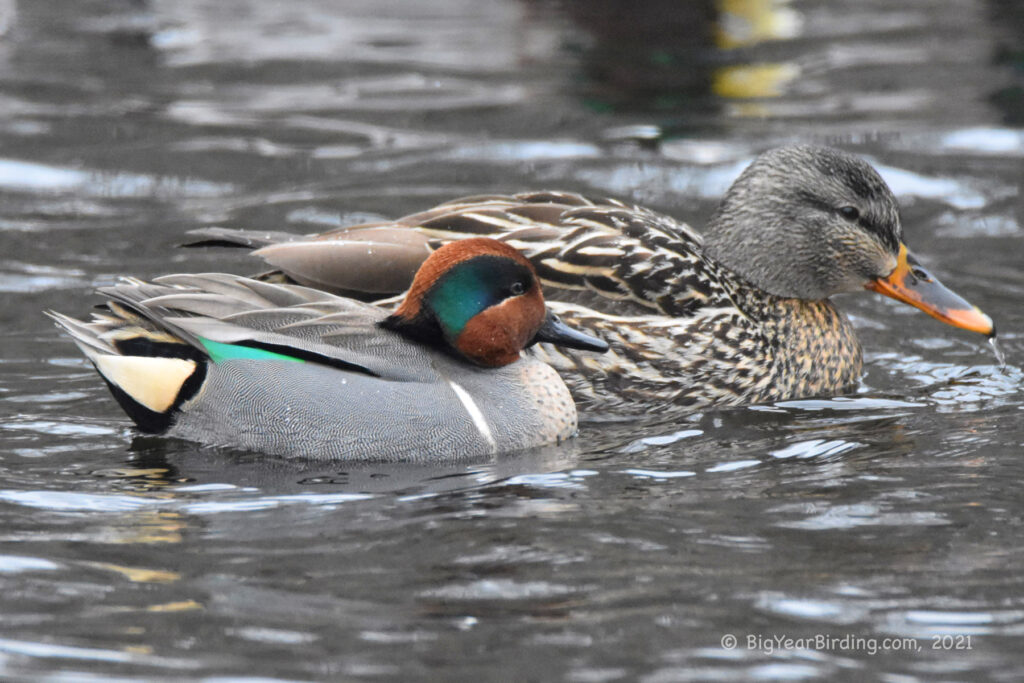
The Green-winged Teal (Anas crecca) is a small dabbling duck found in North America, Europe, and Asia. Adults measure about 13 inches in length and weigh between 0.5 to 1.1 pounds, with males being slightly larger than females. One of the distinguishing field marks of the Green-winged Teal is the green patch on its wing, which is visible in flight. Another distinguishing characteristic is the male’s iridescent green head and the white crescent on its face.

Green-winged Teals breed in the northern regions of North America, Europe, and Asia, and migrate south during the winter months. In North America, they are found as far south as Central America and the Caribbean. During migration, they can be seen in small flocks flying in a V-formation. They typically prefer freshwater habitats such as ponds, marshes, and wetlands.
The Green-winged Teal is an omnivore, feeding on a variety of aquatic plants, seeds, and insects. During breeding season, they will also feed on invertebrates and small fish. They forage by dabbling on the surface of the water or by submerging their head to feed on underwater vegetation.
The Green-winged Teal is an important game bird, and is hunted for sport and food. Despite this, their populations remain stable and are not currently listed as a threatened species. However, they are vulnerable to habitat loss and degradation, and their conservation status may change in the future.

Overall, the Green-winged Teal is a small but striking bird that is easily recognizable by its green wing patch and iridescent head. They are an important part of the ecosystem, and their continued presence in wetland habitats is crucial for maintaining healthy ecosystems.

